Bernadette Austin, project manager, Domus Development; and Meea
Kang, president and founding partner, Domus Development
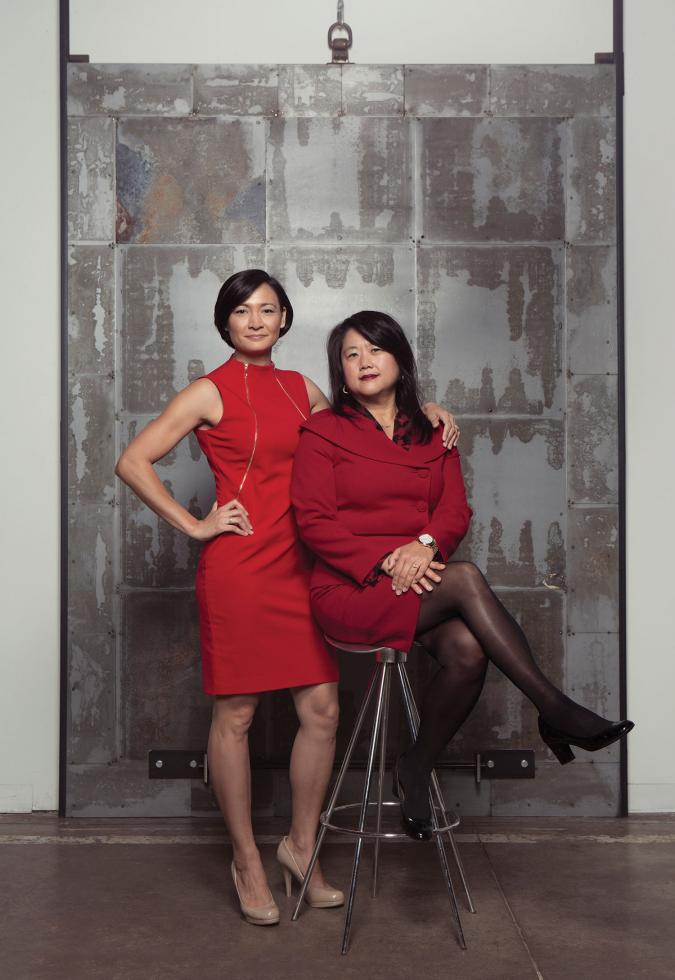
Just how high is the proverbial glass ceiling? On one hand, we see more and more high-wattage female CEOs like Yahoo’s Marissa Mayer, Theranos’ Elizabeth Holmes and HP’s Meg Whitman. On the other, a study from Ernst & Young found that amongst S&P 1,500 companies, there are more CEOs named John than there are female CEOs combined. Women now earn more degrees than men (57 percent of college degrees, 60 percent of master’s degrees), yet still earn only 77 cents on the dollar. The pay gap is real.
“Of the 195 independent countries in the world, only 17 are led by women. Women hold just 20 percent of seats in parliaments globally,” writes Sheryl Sandberg in her book Lean In, arguing, “It is time for us to face the fact that our revolution has stalled. The promise of equality is not the same as true equality.”
This is not just a women’s issue. This is not just an issue of fairness (but it certainly is that). It’s also a business issue. When tracking the financial performance of 2,000 companies, researchers at Credit Suisse, a global financial services firm, found a tight correlation between gender diversity and growth: Firms with a higher percentage of women on the board of directors tended to have a higher return on equity. And according to a 2014 analysis from accounting firm Rothstein Kass, hedge funds led by men had an annual return of 6.1 percent. The funds led by women: 9.8 percent. Diversity pays.
So how does the picture look in the Capital Region? Focusing on four sectors — STEM, justice, development and investment — we rounded up some of the city’s key leaders: a district attorney, a med school dean, the head of an FBI office and enough CEOs to rival “Shark Tank,” to get their take on how women are perceived in their industries, how that perception has changed over time and what it will take to truly reach parity.
*Quick disclaimer: Each of these interviews was conducted separately, then knitted together for improved readability. This does not mean, therefore, that the response from one executive should be taken as a response from the group as a whole.
STEM
As recently as January 2015, a study from UC Hastings found that after surveying 557 women in science, technology and math research, nearly all reported experiencing gender bias — 93 percent of white women and a shocking 100 percent of women of color.
We spoke to Dr. Pamela Marrone, founder and CEO of Marrone Bio Innovations, which creates eco-friendly, bio-based pest management solutions, to see if that bias remains present in the top ranks of the region’s tech industry. She’s joined by Cate Dyer, who, in 2010, flipped a $9,000 investment into StemExpress, a Placerville company that supplies biomedical researchers with blood, tissues and bone marrow. Just four years later, Inc. magazine scored StemExpress as the No. 35 fastest-growing, woman-led private company in America.
For the academic perspective, we have Dr. Julie Freischlag, the vice chancellor for human health sciences and dean of the School of Medicine at UC Davis, whose resume reads like a greatest hits of medicine: editor of JAMA Surgery, former surgeon in chief at Johns Hopkins, chair of the board of regents of the American College of Surgeons, and on and on.
Cate Dyer, founder and CEO of StemExpress
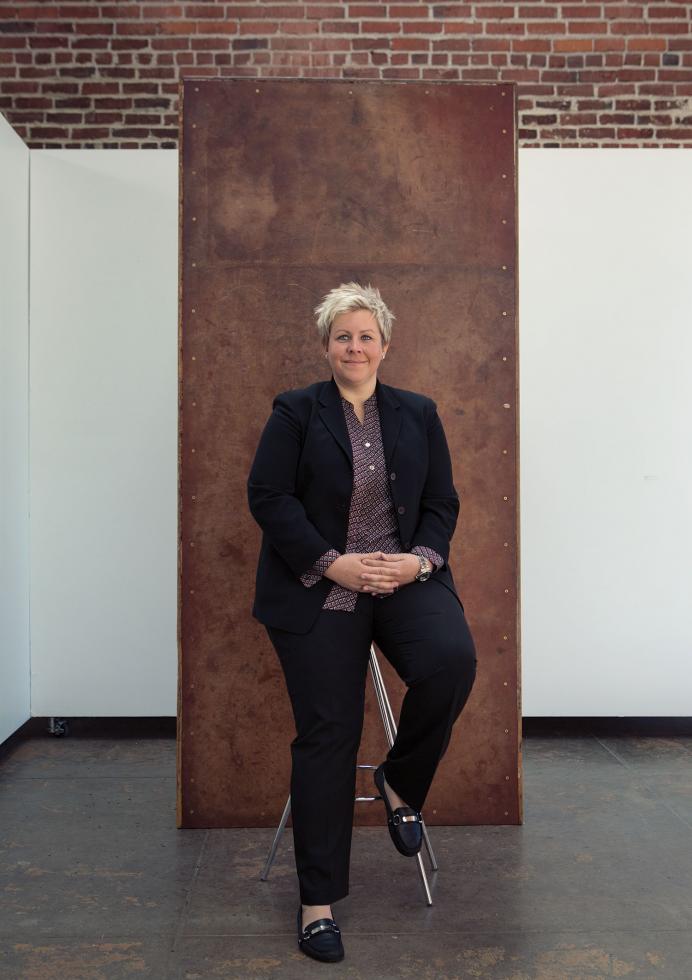
Do some people look at you differently as a female CEO instead of just a CEO?
Cate: Oh, I go to events all the time where I’m standing with a male colleague who’s 10 or 15 years older than me, and it doesn’t even cross their minds that I’m the CEO. Sometimes when I introduce myself they’ll say, “I thought your CEO was going to be here.” I try and laugh it off. But stereotypes are so prominent. They still exist. People say, “It’s completely changed!” Or, “It’s not like that anymore!” Sure it is. It happens to me all the time.
What’s your strategy for dealing with this flak?
Cate: I use it to my advantage. People underestimate me constantly. In my 20s, I joined a sales team of mostly men, aged 35 to 45. They would say, “Oh, who knows why they hired this girl?” And I would dominate the field. I would crush these guys’ sales numbers. A lot of women CEOs say the same thing: Let them underestimate you. They’ll never see you coming.
Pam: There’s a subtle discrimination around how women are perceived, relative to men. This is by far the biggest challenge. Women have a narrow range of behavior that’s considered acceptable.
The idea that if a male says something assertive, he’s just being ambitious, but if a woman says the same thing, she’s abrasive?
Dr. Pamela Marrone, founder and CEO of Marrone Bio Innovations
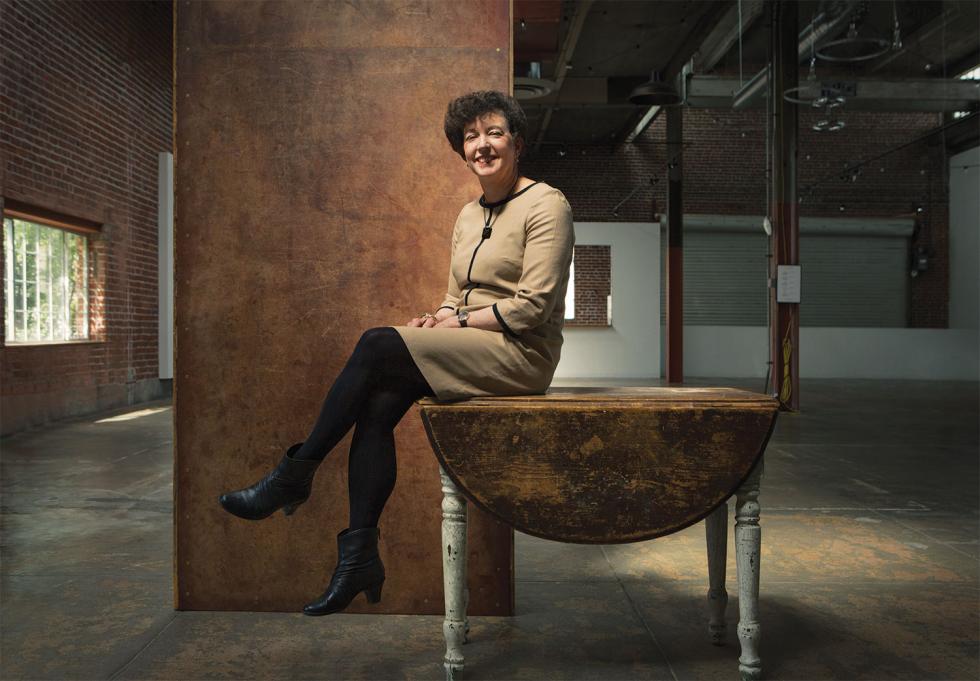
Pam: Exactly. No one says about a male CEO, “He’s too strong, he’s too difficult.” CEOs are supposed to be strong. That’s who they are. That’s how they got there. And women have to frequently dial it back. I’ve experienced that again and again in my career. People say, “Pam, you have such a loud voice!” Well, when you’re in a room full of guys and you’ve had to repeat yourself over and over to get heard, I had to develop a loud voice. I never thought that this late in my career I would still be dealing with these issues of style and communication. I guess it will never end.
M.R.C. Greenwood, the former chancellor of UC Santa Cruz, refers to this as the “plexiglass ceiling.” You “lean in,” but once you’re there, there’s constant poking at you. It’s very competitive at the top.
Dr. Freischlag, have you felt a real change in the industry since you started out?
Julie: We’ve made great strides. In 1979, when I first interviewed for surgery jobs, I was the only woman everywhere I went. In the orientation they said, “Welcome, all you young men … and one woman.” In 1980, surgery recruitment was only 10 percent women. Now it’s 50 percent. I’ve seen so much improvement in the last 30 years.
Dr. Julie Freischlag, the vice chancellor for human health
sciences and dean of the School of Medicine at UC Davis
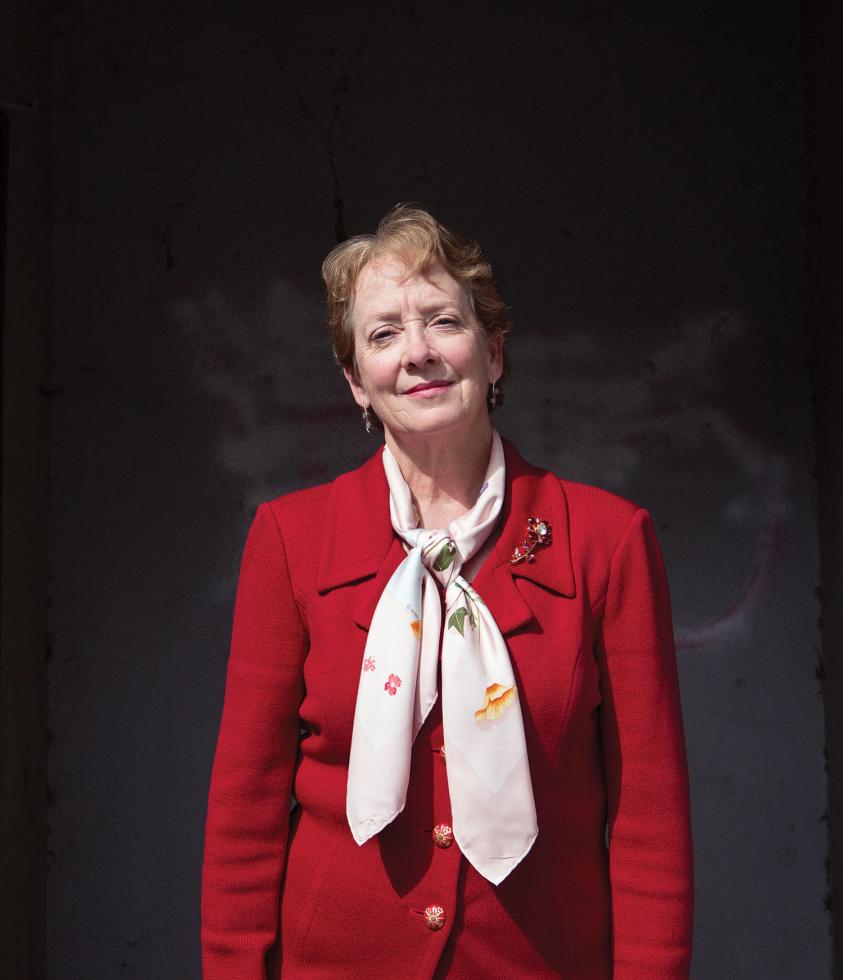
What do you think accounts for this?
Julie: The newer generation is so used to seeing things intermingled — they’ve seen women in sports, they’ve seen women lead. I think in the next 10 years it will be almost unacceptable, even taboo, not to include diversity. The world of business has already proven this: When you have diverse individuals and you have a conversation, you end up with a better answer.
So how do we continue to get more women involved in STEM?
Cate: Women CEOs need to be really active. Giving internships for students. Mentorships. We have to be out there in front of the general public. Every time we have high school students do a walk-through in our building, I know how impactful it is, particularly for girls.
Pam: The workplace needs to become more flexible and family-friendly. That way everyone benefits. Also, women have to support women. It’s very sad when studies show that women rank other women worse than men for the exact same behavior.
JUSTICE
Is the glass half empty or half full? In the FBI, women make up 58 percent of the total professional staff — but only 20 percent of special agents. It’s still rare enough that Monica Miller, the FBI’s special agent in charge of the Sacramento field office, has a movie poster in her office that reads “FBI Girl,” given to her as a good-natured joke. “I’ve never seen the movie,” she says, laughing. Something less rare: female district attorneys. To that end, we spoke with Sacramento District Attorney Anne Marie Schubert.
DA Schubert, you’ve been in the game for over 25 years. How have you seen it change?
Anne Marie: When Jan Scully became DA in 1994, she was the only female supervisor in an office dominated by men. In the last 20 years, we’ve seen a balancing of men and women. We now have more female prosecutors than male prosecutors. There are 58 elected district attorneys, and 18 to 20 are now women. Just four years ago it was 12. The office has done a tremendous job closing that gap. Even though California has small, rural counties, we’re still seeing women getting elected. Gender doesn’t matter. I feel very fortunate.
What do you credit for this?
Anne Marie: The visibility of female leaders has helped. We now have several female sheriffs, three new female DAs. People are getting more comfortable with the idea of us being in law enforcement.
Monica Miller, special agent in charge, Federal Bureau of
Investigation Sacramento Field Office; and Sacramento District
Attorney Anne Marie Schubert
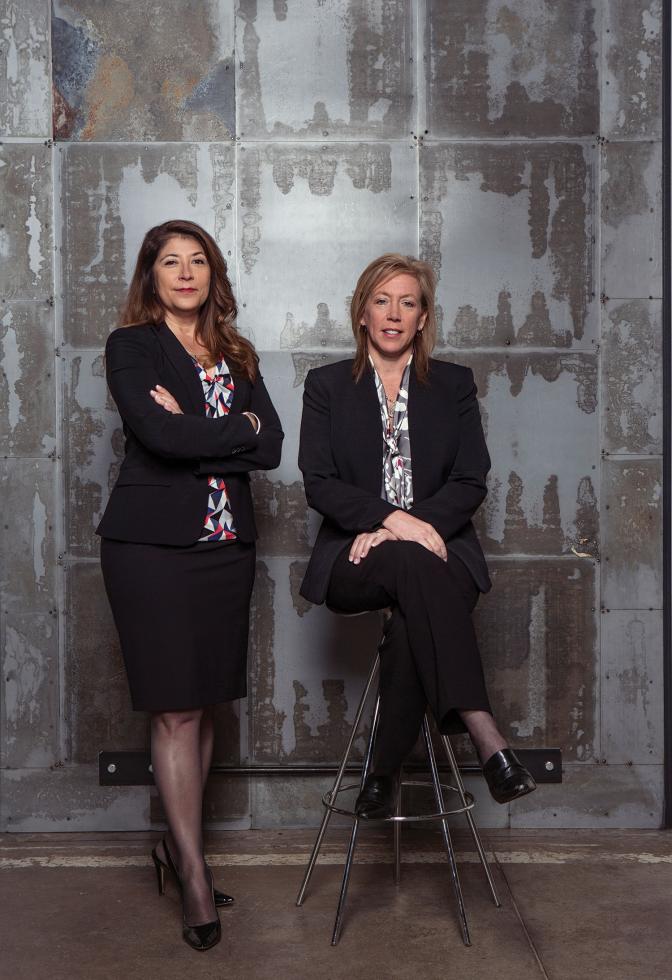
Special Agent in Charge, there are many women in support roles at the FBI, but not many in senior management. Why the discrepancy?
Monica: A lot of women attracted to the FBI want to be super at everything. They want to be a super FBI Agent, but they also want to be a super mom. I do not have children, but I’m awed and amazed at the women who decide to. A lot of the women who have children will step out of management or remain a case agent [instead of a field agent], continue to contribute and do a fantastic job at it. Getting into senior management requires several transfers, uprooting a spouse and family, sometimes working 18-hour shifts.
Gender discrimination, I would imagine, is still an issue. Is this something you’ve experienced?
Monica: Twenty years ago, I had to answer the phones on complaint duty for the day, and an elderly man called and said, “I want to speak to an agent.” I told him that I’m an agent. He said, “How can you be an agent? You must be a secretary.” I assured him that I’m an agent. He said, “Let me talk to one of those men agents.” [Laughs.] But it’s a generational thing. I wasn’t offended by it. And it doesn’t happen very often anymore.
Anne Marie: On a personal level, I’ve never experienced anything like that. I’ve never looked at it as, “I’m a female prosecutor.” I just look at it as, “I’m a prosecutor.”
Apart from the obvious reasons of basic fairness, why else is it important to have an equal representation of women in the justice system?
Anne Marie: The criminal justice system, to the best of our ability, should reflect the community it serves. Sacramento is one of the most diverse communities you’ll find. Having that diversity allows us to be better at what we do. We might staff a case, say, and maybe there’s three of us in the conference room — we each bring something different to the conversation. It can lead to better brainstorming. It helps us deliver a better product of justice.
DEVELOPMENT
If when you think of the world of construction your first image is of men in hardhats, then, well … you’re on target. Gender representation within the development industry is nowhere near 50/50. We spoke to a few women bucking the trend: Mary Rotelli, the chief operating officer of Teichert Construction (founded in 1887 by her great-great grandfather); Meea Kang, president and a founding partner of Domus Development; and Bernadette Austin, a project manager at Domus and the co-chair of the Urban Land Institute Women’s Leadership Initiative.
So is it fair to say development is still male-dominated?
Meea: I just came from a meeting today. It was with a well-established real-estate group with hundreds of people in the room. Ninety-seven percent men. Just a small handful of women. Even the speaker said, “It felt like I was in a fraternity today.”
Meea Kang, president and founding partner, Domus Development
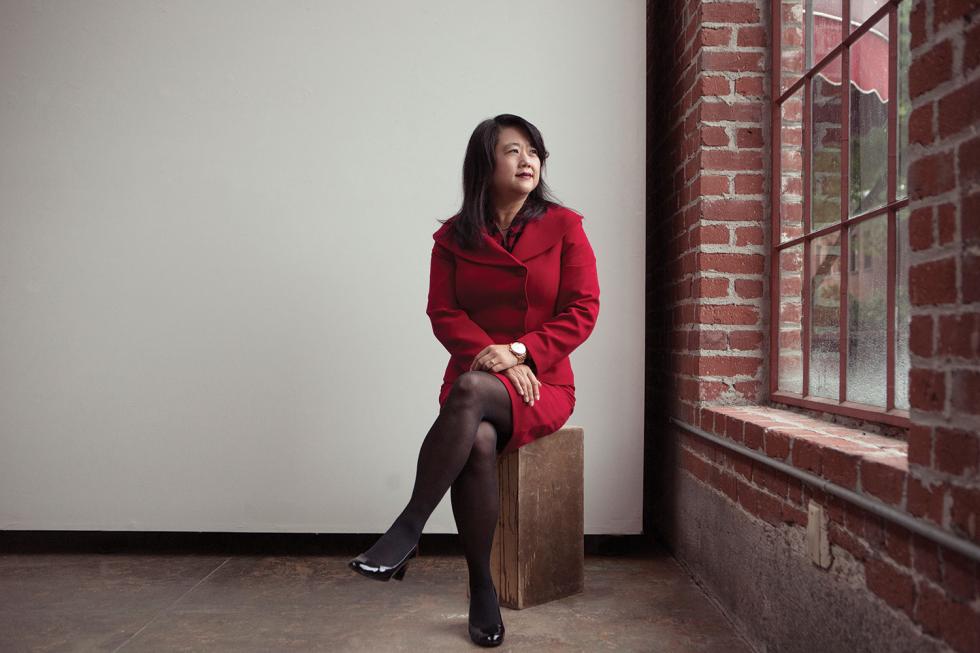
Why is this?
Meea: Traditionally it’s a good ‘ol boys network, and there just weren’t that many women who wanted to attempt to change that.
Bernadette: For land development, there’s a lot of passing things down from families — father to son. So it’s more about who you know. And while there’s a lot of outreach in STEM, where folks are getting the message that, “You, as a girl, can be an engineer,” I don’t see that same outreach in development. There’s not really a message of, “Hey little girl, you can be a real-estate developer!”
How have you seen things change over time?
Mary Rotelli, COO, Teichert Construction
(Photo: Kelly Barr)
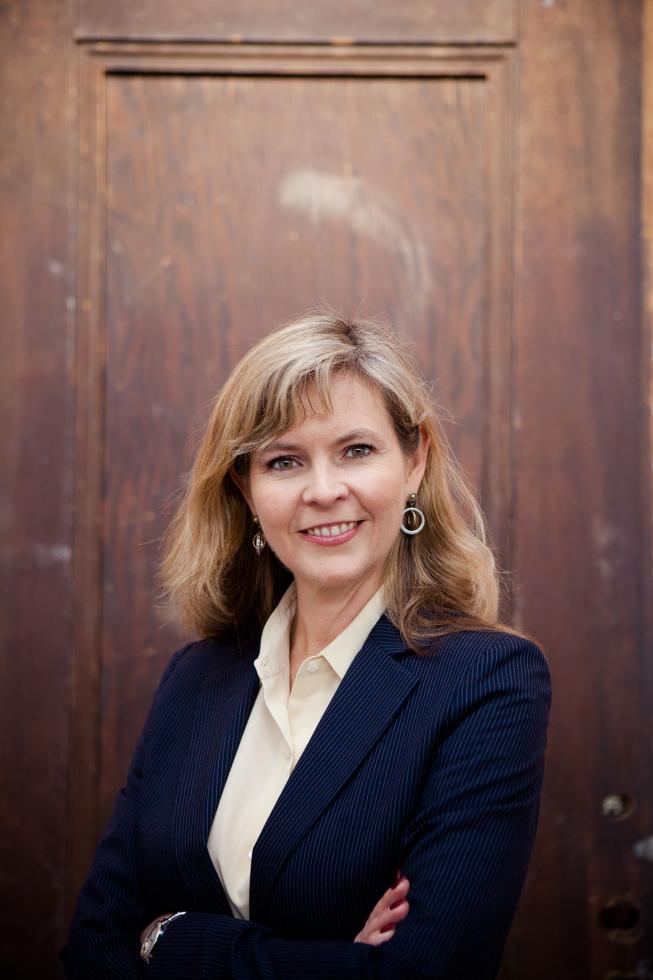
Mary: There are more women in construction than there used to be. There have always been women doing a lot of the administrative, cost and HR-type work — my great-great-grandmother was doing that in 1887 — and in the last couple of decades, I’m seeing more women project managers. But it’s by no means 50/50. I would guess around 30 percent.
Have you experienced overt discrimination, or this more of a structural, systemic problem?
Meea: It’s not like it’s a club where you have to show your gender badge. And once you come into the fold and have things under your belt, it’s easy to cross over and be part of the collective.
Mary: Discrimination is a lot less common than I thought it would be. It crops up when people my grandfather’s age pat me on the head. [Laughs.] But it’s never actually been a problem.
I would imagine the construction industry would make work/life balance and raising a family difficult.
Mary: In terms of raising a family, some construction roles are actually better than other industries. If you’re a project manager, then your days are varied, and you’re not necessarily sitting at your desk all day. You might start your day in the field with a foreman, then review timecards, then if you have to see your kids’ presentation at school, you can just work it in the schedule. It’s a little bit of a well-kept secret.
How does development, in particular, benefit from increased gender diversity?
Meea: Women can bring in a different perspective. I think it’s fair to say that women tend to have a motivation that’s more socially conscious. A lot of women I know in this industry serve on a number of boards, committed to nonprofit causes like sustainability, a green agenda or affordable housing.
There’s clearly a long way to go. What is the key to getting more women involved?
Mary: A combination of one-on-one mentoring, coaching and outreach. More internship programs. A lot of times women don’t even consider this as a career; it’s not as if they thought about it and decided not to do it.
Bernadette Austin, project manager, Domus Development
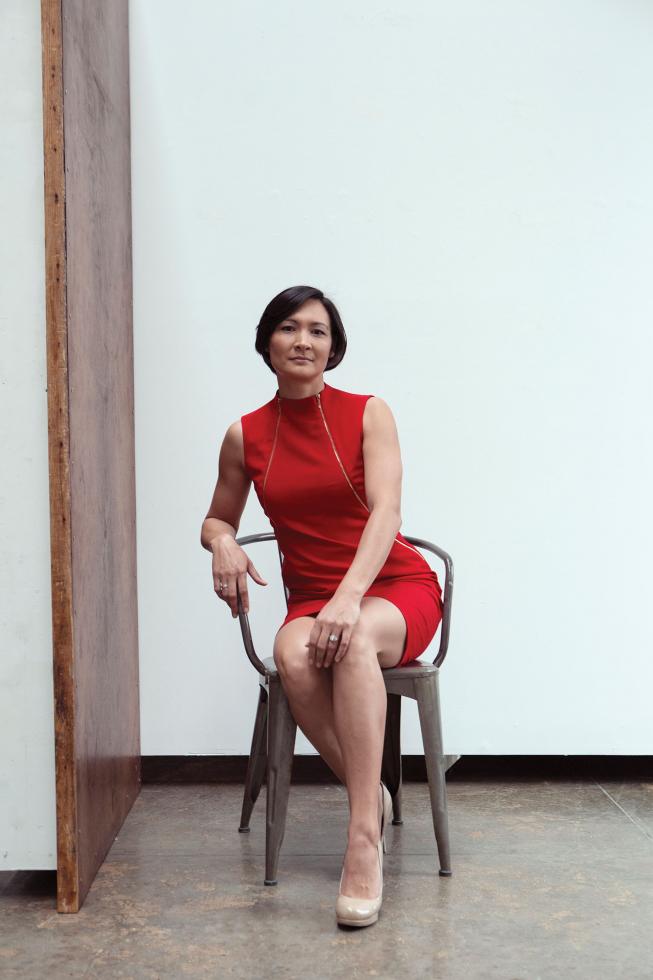
Bernadette: Raising the profile of women in the industry. That’s the goal of the Urban Land Institute, where we put together luncheons and events that showcase achievements. Women don’t always toot their own horns.
Mary: The real challenge is more flexible schedules. That’s the No. 1 issue. All of us — men and women — need to figure out what we’re going to do with the children. How does society take care of kids?
Where do you see the industry headed?
Bernadette: Women make many decisions in the household. We have to recognize that. When women are deciding where we are buying homes, the real-estate industry is going to have to respond to that.
Meea: In the Sacramento region, we’re seeing major change. We need to start embracing this new world of urbanism, shaped towards walkability and more public transportation. So in this environment, real-estate development really welcomes new ideas and new perspective. And women bring that.
INVESTMENT
Dorene Dominguez is the chair of the Vanir Group of Cos. and now a minority owner of the Sacramento Kings. Jonna Ward is the founder and CEO of Visionary Integration Professionals, having grown it from a one-person shop in 1996 to a 700-employee consulting operation that works with partners like SAP, Microsoft and Hewlett Packard. She is also a minority owner of the Sacramento Republic FC. Both are intimately familiar with the ups and downs of raising capital and securing investments.
With respect to the perception of women in senior leadership roles, how have you seen the landscape change?
Dorene Dominguez, Vanir Group of Cos.
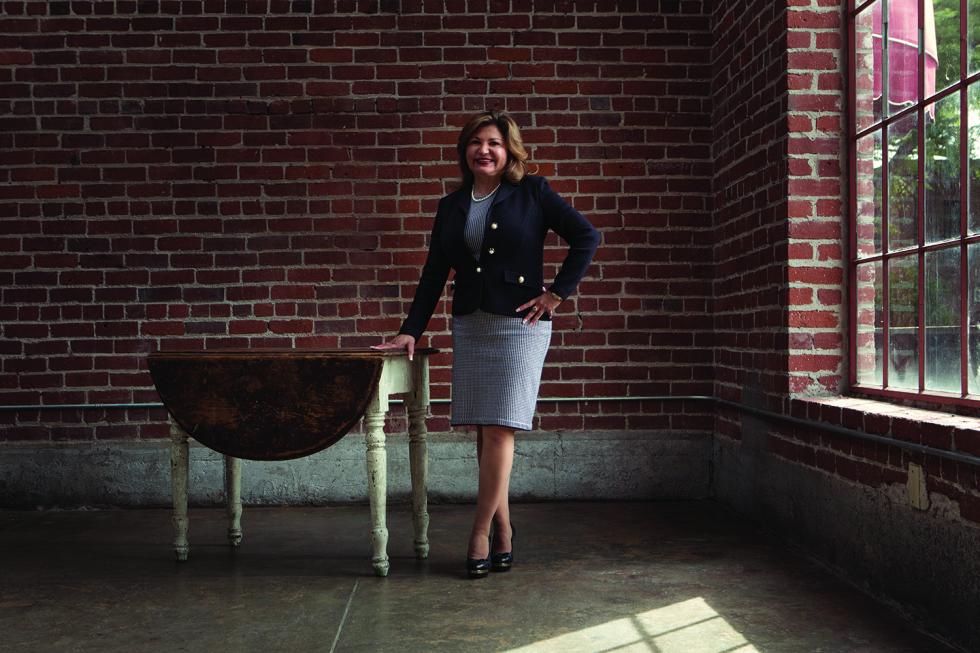
Dorene: Things are getting better, but we’re not there yet. There are still fewer female CEOs than male CEOs. There’s still not equal pay. Until we get parity, we cannot put our heads in the sand and say that things are fine.
Jonna: When I graduated college 25 years ago, on my second day at work (at a consulting firm) I showed up in a pantsuit. The partner told me I basically needed to go home and change because women weren’t allowed to wear pants. I happened to carry around my employee handbook, shared it with the partner, which said that, in fact, I was allowed. [Laughs.] It gives you perspective. On the one hand, we’ve come pretty far.
On that other hand, what challenges remain?
Dorene: In the investment world, we’re sometimes not taken seriously. Again, I do feel that’s changing, and there’s light at the end of the tunnel but there’s still a bias. I can come into a meeting with male colleagues, and if they don’t know who we are, the others will automatically give deference to the man.
Jonna: There are two challenges. Women in general — me included — need to do a much better job of telling their story. Studies show that women underestimate their performance when compared to men. If you ask men why they succeed, men will often [take credit], whereas women will often attribute it to other factors, like, “I got a lot of help along the way.” The second challenge is around the correlation between likeability and success. As women get more successful and powerful, everyone, including women, likes them less. Generally speaking, women can be judged more harshly because of their gender. It is what it is. But it’s real.
Jonna Ward, founder and CEO, Visionary Integration Professionals
(Photo: Kelly Barr)
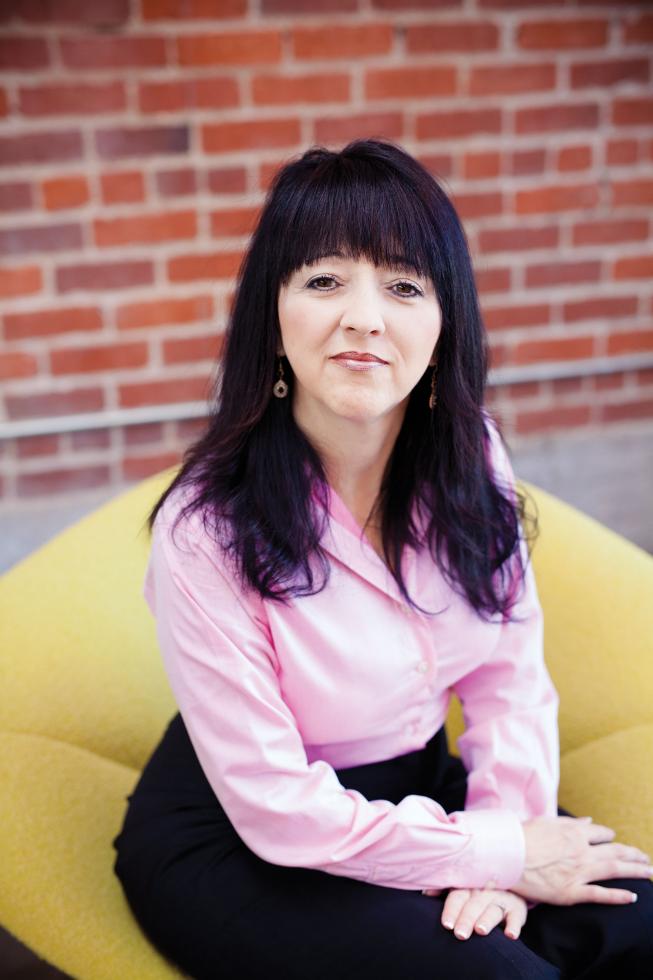
Dorene: I was in my finance class at Notre Dame, and I was maybe with two other women in the class. The school had just become co-ed. It was very much, ‘Oh, we have two women.’ When the priest handed out papers, he asked the women to do it. This squares with research from Harvard professor Rosabeth Moss Kanter, who found that women tend to do the lion’s share of office chores — without seeing any real benefit.
Any advice for future women executives?
Jonna: If you want the answer to be yes, don’t accept no. There are plenty of external limitations that are real, so don’t impose internal limitations. You can do anything you set your mind to doing.
As a culture, how do we continue to level the playing field?
Dorene: Women need to pull up other women. Putting women in positions that they would normally not be in, whether it’s engineering or in the field. That really changes the whole industry. I have a young lady (Carmen Marin) who just completed building a soccer field. The students, faculty, colleagues were so impressed with her performance on this job, they said, ‘I want to do that.’ Breaking those perceptions. Breaking that glass ceiling.



Comments
Such an interesting article! I appreciated the variety of fields and professions represented. It was very informative and provided good understanding of the situation. Many useful suggestions for women!